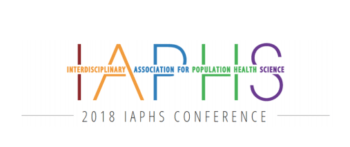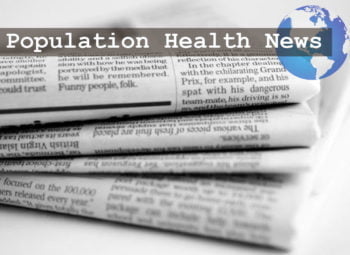The IAPHS Blog is a virtual community that keeps population health professionals connected and up to date on the latest population health news, policy, controversies, and relevant research from multiple fields.

2018 Conference News: Call for Submissions Now Available
We’re pleased to announce our 2018 conference and call for papers: “Pushing the Boundaries of Population Health Science: Social Inequalities, Biological Processes, and Policy Implications,” will convene October 3-5, 2018 at the National Academies of Science, Engineering and Medicine in Washington, DC.

Population Health Round-up: November
Each month, we curate the most interesting news in population health. This month, we look at pregnant moms’ and kids’ health, disparities among race and income, how climate change and toxic ash are affecting health, and how inclusion benefits us all, and more…

Is Digital Technology Making Health Inequality Worse?
What happens to the health and well-being of people left behind in the technology revolution?

Reasons for Optimism in Population Health – Part II
Dr. Julie Maslowsky continues her interviews with population health leaders about why they remain positive about the future of population health. Read on for Part 2.

Five Win Poster Awards at October Conference
Read about our poster winners: telomere length, housing assistance and well-being, state tobacco policies and birth outcomes, food assistance delivery, and disparities, incarceration, and childhood obesity….

Reflections on IAPHS: An Interview with President Sandro Galea
Sandro Galea talks with Chris Bachrach about IAPHS’s first year…

Reasons for Optimism in Population Health – Part 1
In the current climate of political and global tumult, it is easy to feel pessimistic about current and future population health. But Dr. Julie Maslowsky interviews leading population health scientists and finds reasons to be optimistic…

Austin Population Health Conference Draws 400
Our Austin conference was a huge success, thanks to the dedication of many folks. Read on for an overview…

October Roundup: Population Health in the News
We curate population health news from around the globe each month. This month: how wealth and the ways we get around our communities affect population health.

Conference Highlight: Health Happens in State Houses
State-level work is where it’s at for population health, Dr. Fred Zimmerman reports from the Improving Population Health Conference in Austin October 2-4, 2017.
HAVE AN IDEA FOR A BLOG POST?
We want to hear about it! Read our contributor submission guidelines here and then email us at: altmanc@health.missouri.edu.
IAPHS Members: Share your news, accomplishments or publications with us
Click Here!
